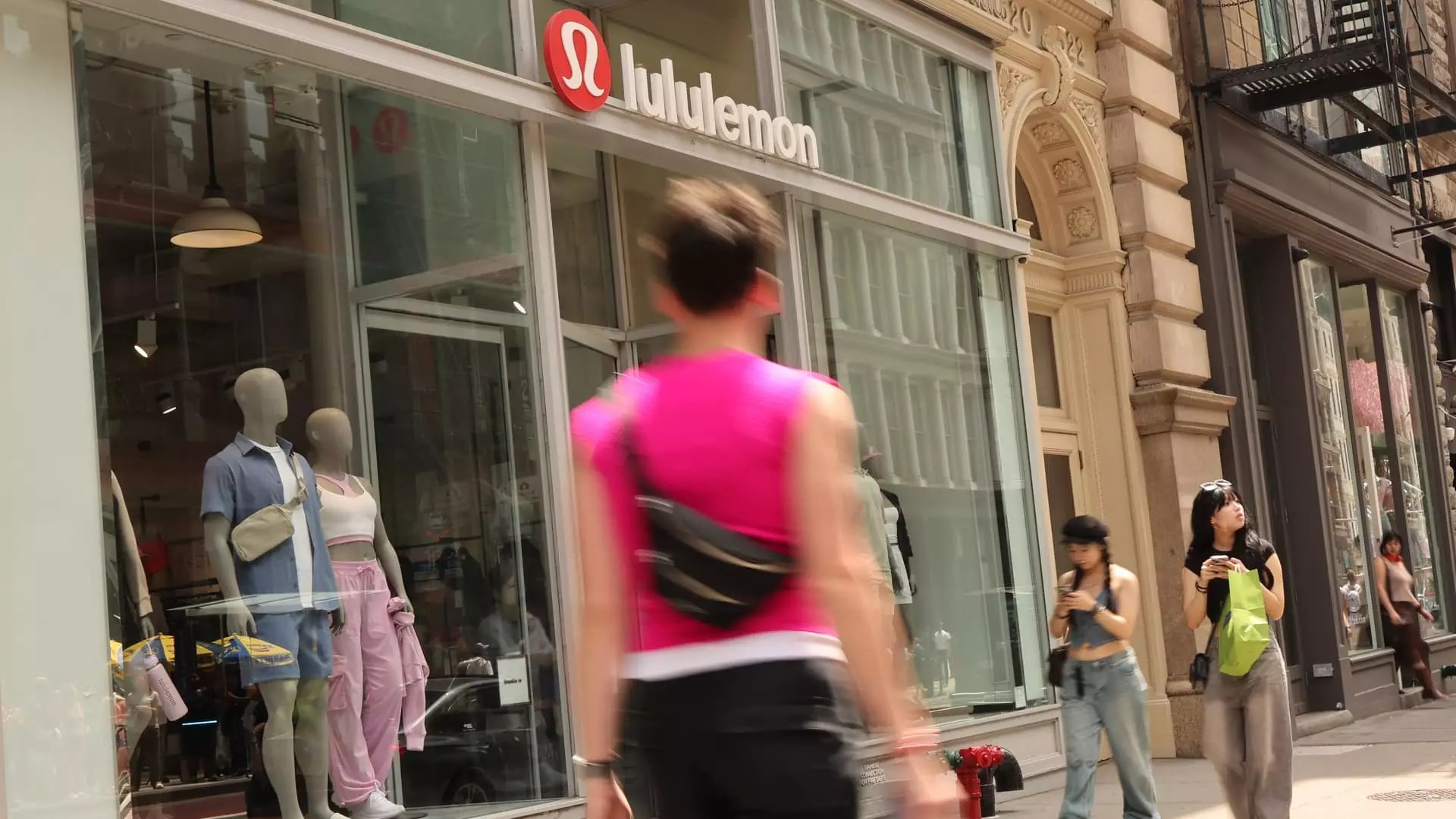Lululemon’s recent earnings report, released in an environment frayed with tariffs and economic unpredictability, has resonated deeper than the mere figures suggest. While the company managed to slightly exceed Wall Street’s expectations for quarterly earnings and revenues, a daunting 20% drop in share price during after-hours trading reveals a market significantly spooked by their slashed full-year guidance. Fiscal first-quarter earnings saw a profit of $314 million, or $2.60 per share, which is an increase from a year ago. However, it’s hard not to shudder at the revelation that the once optimistic trajectory has been recalibrated. The company now anticipates earnings per share between $14.58 to $14.78, a stark downgrade from earlier forecasts that peaked at $15.15.
The celebration surrounding slight revenue growth—$2.37 billion compared to $2.21 billion the previous year—feels hollow when juxtaposed with the reality that comparable sales rose merely 1%, falling short of Wall Street expectations. A company that once illuminated the activewear market is now struggling under the weight of external pressures, and shareholders appear concerned that momentum may diminish as rapidly as it had built.
Macro Winds and Market Turbulence
CEO Calvin McDonald tried to frame the situation in a hopeful light, insisting that Lululemon’s “strong financial position and competitive advantages” would enable them to maneuver through the chaos. Yet one must question what this ambition translates to in practice. Instead of using the firm’s supposedly solid standing to pursue bold growth opportunities, Lululemon seems caught in a defensive posture. Fears surrounding President Trump’s tariff policies and macroeconomic slowdown are palpable, prompting the company to warn that things could get worse before they get better. The market reacted swiftly and unforgivingly—a 20% drop is no mere hiccup; it signifies a profound loss of confidence in Lululemon’s ability to adapt and thrive.
Moreover, the landscape for retailers isn’t improving either. Other brands, including notable industry players like Abercrombie & Fitch and Macy’s, have also lowered their guidance due to a lack of clarity. Major competitors, including Gap and Nike, have begun raising prices. We are witnessing a ripple effect across the sector, where anxiety about tariffs translates into business uncertainties that escalate costs and shrink margins. Lululemon’s cautiousness is understandable; however, it raises the question of whether such reticence will inhibit the very growth opportunities the company hopes to capitalize on.
A Shifting Competitive Landscape
In the context of activewear, Lululemon once stood on a pedestal above its competitors, primarily due to its premium branding and a dedicated customer base. But, as evidenced by recent performances, that pedestal is beginning to wobble. Companies that lagged in similarly charged environments now see a window of opportunity to challenge Lululemon’s reign. Given the disclosure that 40% of their products originate from Vietnam and significant portions also from countries like Cambodia and Sri Lanka, concerns about their supply chain integrity—already grappling with tariff implications—will only intensify. The reliance on external suppliers to deliver quality products should be a steadfast guarantee; instead, it raises questions about sustainability and ethical practices in a rapidly shifting market.
Any dust cloud obscures a path forward, yet few appear to share Lululemon’s level of optimism regarding their recovery. Analysts anticipated a stronger projection for earnings in the upcoming quarter, highlighting an impending earnings per share of $3.29, yet Lululemon’s conservative estimations hover between $2.85 and $2.90. This relentless cycle of cautious outlooks creates an environment where long-term growth strategies could take a backseat to survival.
The Burden of Inertia
Retailers don’t simply exist in a vacuum—every decision they make reverberates through their market presence and customer perception. The reluctance to act decisively sets a tone of inertia. For Lululemon, the daunting reality is that reduced earnings guidance serves not only to illuminate present difficulties; it signals the risk of lost relevance. The share price plummet indicates a disenfranchisement among investors who fear that the dynamic brand is losing its competitive edge.
In a center-right liberal context, one could argue that the very ambitions that made Lululemon a leader in the activewear market risk becoming its Achilles’ heel. By clinging to a precarious balance of optimism and caution, the company runs the significant risk of not just stalling its own growth but inviting competitors to close in. Deliberation is necessary, but action is paramount—now more than ever. In the world of business, fortune favors the bold, and Lululemon must remember to embrace that ethos or watch from the sidelines as competitors sprint ahead.

